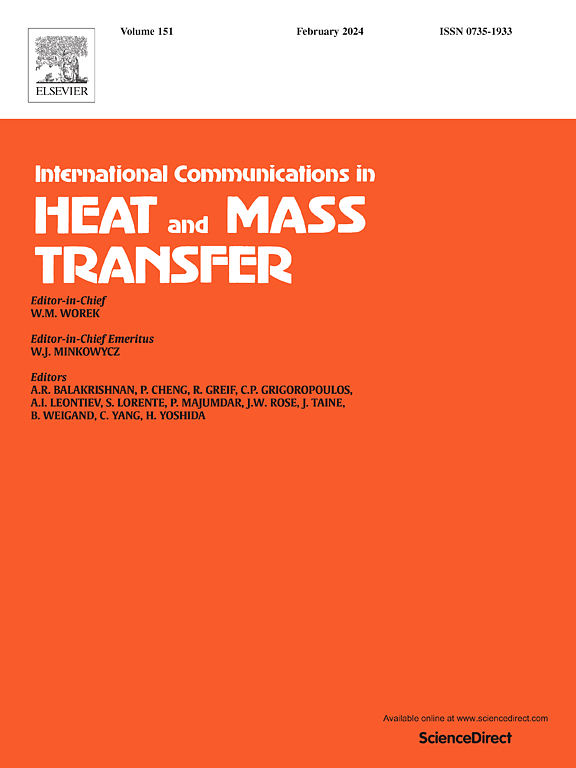Investigation of the heat transfer of a single U-tube borehole heat exchanger for medium-shallow geothermal energy
IF 6.4
2区 工程技术
Q1 MECHANICS
International Communications in Heat and Mass Transfer
Pub Date : 2025-02-04
DOI:10.1016/j.icheatmasstransfer.2025.108644
引用次数: 0
Abstract
The full scientific utilization of geothermal energy is an indispensable part of realizing the “double carbon” goal, based on its remarkable characteristics of energy saving and environmental protection. The study and utilization of medium-shallow geothermal energy (150–1500 m) has attracted increasing interest. Medium-shallow borehole heat exchanger (MSBHE) can meet the demand of both building cooling and heating, with a greater heat exchange capacity, a lower initial investment, and a greater capacity to withstand imbalance between heat extraction and rejection, which combines the advantages of both shallow borehole heat exchanger (SBHE) and medium-deep borehole heat exchanger (MDBHE). The paper focuses on single U-tube MSBHE. A quasi-three-dimensional heat transfer model of MSBHE is proposed, and then experiments are carried out to verify the rationality and correctness of the heat transfer model. Subsequently, calculations are carried out using the model to study heat extraction in winter and heat rejection in summer for the MSBHE. The variations in the inlet and outlet temperatures of the circulating fluid with operating time are also studied. Moreover, diagrams are presented to show the relationships between the nominal heat exchange capacity (NHEC) and key parameters, such as borehole depth, circulating fluid flow rate, space between the two branches of the U-tube, U-tube size, grout, geothermal heat flux and average annual atmospheric temperature, which are helpful in engineering practice.
求助全文
约1分钟内获得全文
求助全文
来源期刊
CiteScore
11.00
自引率
10.00%
发文量
648
审稿时长
32 days
期刊介绍:
International Communications in Heat and Mass Transfer serves as a world forum for the rapid dissemination of new ideas, new measurement techniques, preliminary findings of ongoing investigations, discussions, and criticisms in the field of heat and mass transfer. Two types of manuscript will be considered for publication: communications (short reports of new work or discussions of work which has already been published) and summaries (abstracts of reports, theses or manuscripts which are too long for publication in full). Together with its companion publication, International Journal of Heat and Mass Transfer, with which it shares the same Board of Editors, this journal is read by research workers and engineers throughout the world.

 求助内容:
求助内容: 应助结果提醒方式:
应助结果提醒方式:


